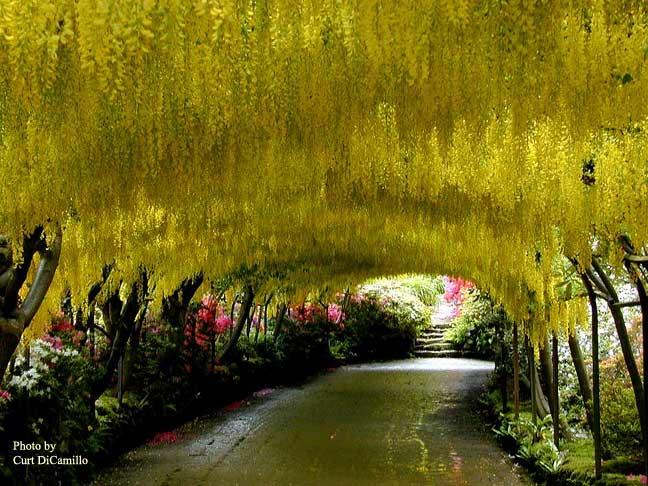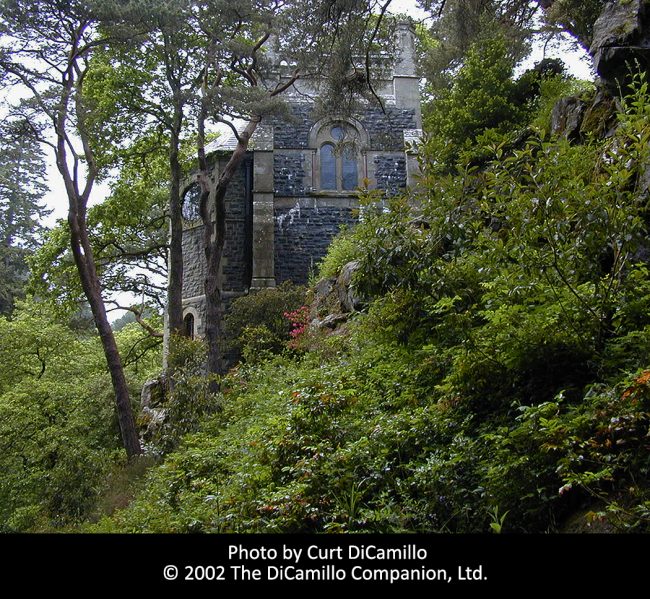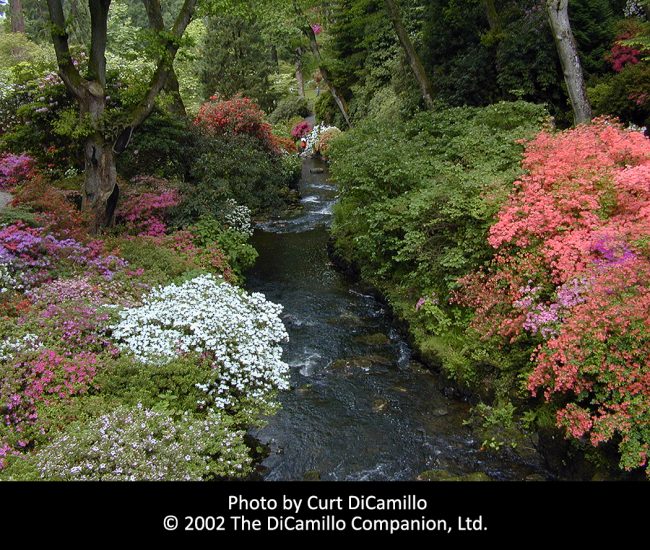
The house

The Laburnum Arch


The mausoleum

The mausoleum





Earlier Houses: There was an earlier house, Old Bodnod, on, or near, the site of the current house.
Built / Designed For: Colonel Forbes
House & Family History: The industrial chemist Henry David Pochin, the son of a yeoman farmer from Leicestershire, invented a clarified rosin (the basis of soap) that enabled soap to be white—for the first time—rather than the traditional brown. He then went on to invent alum cake, which was widely used in the papermaking industry. In 1874 Pochin used the profits from his inventions to purchase Bodnant and its estate of 25 surrounding farms. The 18th century house, which originally had sash windows and white stucco covering, was enlarged and altered by Pochin, who faced it with yellow sandstone mullions and a blue local stone. He also created the framework of the Dell, laid out the Laburnum Arch, and, in 1882, added a conservatory to the house. Pochin also built the family mausoleum, enigmatically called "The Poem." Pochin's daughter, Laura, inherited the estate upon the death of her father in 1895. Laura was married to Charles McLaren, a barrister and MP who was elevated to the peerage in 1911 as the 1st Baron Aberconway (the title translates as "mouth of the Conway" in Welsh). The garden, but not the house, was donated to the National Trust in 1949.
Comments: Bodnant is considered one of the most spectacular gardens in the world.
Garden & Outbuildings: Bodnant (which translates from Welsh as "dwelling by a stream") sits high above the River Conwy and looks across the valley to the Snowdon range (the highest point in the British Isles outside the Scottish Highlands). The garden contains large native trees, many dating to 1792, and is in two parts: the upper part around the house consists of the Terrace Gardens and lawns; the lower part, or Dell, is formed by the valley of the River Hiraethlyn and contains the Wild Garden and the Pinetum. The gardens were begun in 1875 and are the product of four generations of Aberconways. There are currently over 80 acres of gardens open to the public at Bodnant, including the Upper Rose Terrace, the Croquet Terrace, the North Garden, the Lily Terrace, the Pergola and Lower Rose Terrace, the Canal Terrace (including the Pin Mill), the Big Rockery, the Dell, the Waterfall, the Round Garden, and the famous Laburnum Arch, a 165-foot-long tunnel of laburnum (the longest in Britain) that blooms from mid-May to early June. In 2012 four new areas opened to the public: the Winter Garden, the Old Park Meadow, the Yew Dell, and The Far End. The Italian-style terraces near the house were laid out between 1904 and 1914. In 1938 Henry Duncan, 2nd Lord Aberconway, purchased the Pin Mill folly from its original site in Gloucestershire and re-erected it on the Canal Terrace at Bodnant. The Pin Mill is similar in style and date to the Gothic Summer House at Frampton Court in Gloucestershire and may have been associated with that house, considering that the folly once stood near Frampton. In the early 20th century the Pin Mill was used as a factory for making pins and was later was used by a tanner for storing his hides. In 1949 the 2nd Lord Aberconway persuaded The National Trust to accept the gardens at Bodnant (together with an endowment provided by the family) into its care on their own merit, rather than simply as an adornment attached to a country house. Bodnant was the second garden accepted by the Trust on this basis (the first was Hidcote in Gloucestershire). The house was not included in the gift to the Trust, and the family continues to live there today. The garden at Bodnant is one of the most popular in Wales, attracting approximately 200,000 visitors per year.
Architect: Messenger & Co.
Date: 1881-82Architect: William John Green
Date: 1875-76
Title: Bodnant Garden Guidebook
Author: NA
Year Published: 2001
Publisher: Norwich: Jarrold Publishing
ISBN: NA
Book Type: Light Softback
Title: National Trust Handbook 2000, The
Author: NA
Year Published: 2000
Publisher: London: The National Trust
ISBN: NA
Book Type: Softback
Title: National Trust Magazine, The
Author: NA
Year Published: NA
Reference: Number 87, page 19
Publisher: Swindon: The National Trust
ISBN: NA
Book Type: Magazine
House Listed: Grade II
Park Listed: Grade I
Current Seat / Home of: Henry Charles McLaren, 4th Baron Aberconway
Past Seat / Home of: SEATED AT EARLIER HOUSES: Lloyd family, 17th century. Forbes family, 18th century. SEATED AT CURRENT HOUSE: Colonel Forbes, until 1820. William Hanmer, 19th century. Henry David Pochin, 1874-95. Charles Benjamin Bright McLaren, 1st Baron Aberconway, 1895-1934; Henry Duncan McLaren, 2nd Baron Aberconway, 1934-53; Charles Melville McLaren, 3rd Baron Aberconway, 1953-2003.
Current Ownership Type: Individual / Family Trust
Primary Current Ownership Use: Private Home
Ownership Details: The house is owned by the McLaren family. The gardens are owned by the National Trust and administered by the McLarens.
House Open to Public: Grounds Only
Phone: 01492-650-460
Fax: 01492-650-448
Email: [email protected]
Website: https://www.nationaltrust.org.uk
Historic Houses Member: No